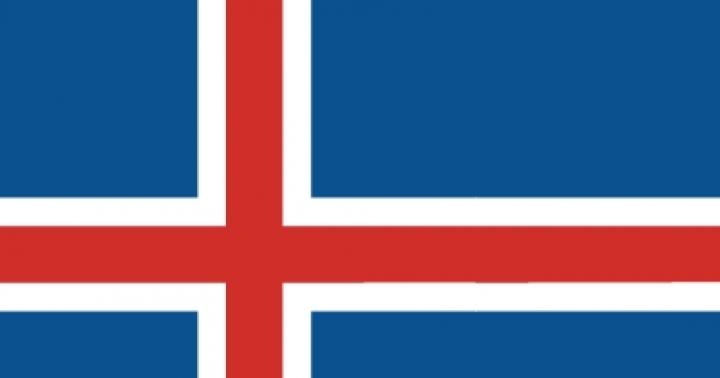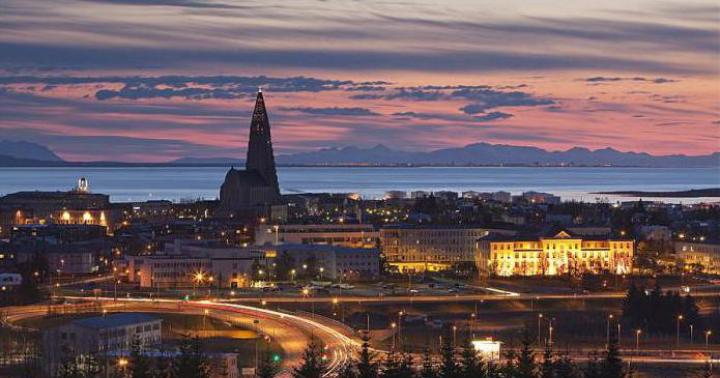Oceania is the world's largest cluster of islands located in the western and central Pacific Ocean. When dividing the entire land mass into parts of the world, Oceania is usually united with Australia into a single part of the world Australia and Oceania. The islands of Oceania are washed by numerous Pacific seas (Coral Sea, Tasman Sea, Fiji Sea, Koro Sea, Solomon Sea, New Guinea Sea, Philippine Sea) and Indian oceans (Arafura Sea). The total area of \u200b\u200bthe islands is 1.26 million km² (together with Australia 8.52 million km²), the population is about 10.7 million people. (together with Australia 32.6 million people). Oceania is geographically subdivided into Melanesia, Micronesia and Polynesia; sometimes New Zealand is singled out

Melanesia Micronesia Polynesia New Guinea, Solomon, New Hebrides, Fiji, New Caledonia Mariana, Caroline, Marshals, Gilbert New Zealand, Tonga, Samoa, Societies, Marquesas, Tuamotu, Easter, Hawaiian "Melas" - in Greek "black", "pump" - "island", they are inhabited by negroid tribes with black skin Region of very small islands "micro" - "small "This group includes all the rest of the large number of islands" poly "-" many "-" islands "

Oceania Modern political map Oceania has been forming for a long time. Many islands are still the possessions of the United States (Hawaiian Islands), Great Britain, France, Australia. Until the early 60s of the 20th century, there was one independent state - New Zealand, and now there are more than 10. The smallest is Nauru (one island), And Kiribati - 30 islands.

Natural features The islands of volcanic origin are mountainous. Coral islands (atolls) are in the form of a solid or broken ring. In the center of the island there is a shallow lagoon. On some islands, copper, coal, phosphorites, oil, natural gas are mined. Most of The islands lie in the equatorial and tropical zones, so there are high temperatures and a lot of precipitation. In the past, the islands of Oceania were a single land, but as a result of the rise in the level of the World Ocean, a significant part of the surface was under water. The relief of these islands is mountainous and highly dissected. For instance, highest mountains Oceania, including Mount Jaya (5029 m), are located on the island of New Guinea. Mount Jaya in Western New Guinea (Indonesia) is the highest point in Oceania.


Mineral resources of the islands On most of the islands of Oceania, there are no minerals, only the largest of them are being developed: nickel (New Caledonia), oil and gas (New Guinea island, New Zealand), copper (Bougainville island in Papua New Guinea), gold ( New Guinea, Fiji), phosphates (on most islands, deposits are almost or have already been developed, for example, in Nauru, on the Banaba, Makatea islands). In the past, many islands in the region have been actively developing guano, decomposed seabird droppings that have been used as a nitrogen and phosphorus fertilizer. On the ocean floor of the exclusive economic zone of a number of countries, there are large accumulations of ferromanganese nodules, as well as cobalt, but at the moment no development is being carried out due to economic inexpediency.

Economy of Oceania The main industry is tropical agriculture. Coconut palms are grown on the plantations. Tea coffee. Bananas, sugarcane, pineapples. Particularly prized is copra - the dried pulp of a coconut, from which coconut oil is obtained. The indigenous population breeds goats and pigs. The traditional occupation is fishing and other types of sea fishing. New Zealand is the only country in Oceania with a well-developed economy.

Vegetable and animal world The organic world is endemic and has a poor species composition. Coral islands are poor in wildlife, because there is little fresh water. There are many birds, in New Guinea there are echidnas, tree kangaroos, wingless kiwi birds, primordial gatteria. There are no mammalian predators. Vegetable world not rich in: palms, casuarinas, tree ferns, vines and coconut palms.











Oceania is home to both the indigenous population and immigrants from Europe. Asia, America, The indigenous inhabitants of the islands of Melanesia, the Papuans, belong to the equatorial race, and the Polynesians (Maori) represent a special group of peoples. The indigenous population carefully preserves their original culture. The Anglo-New Zealand nation was formed in New Zealand. Oceania population

Most countries in Oceania have very weak economies due to several reasons: limited natural resources, remoteness from world markets for product sales, shortage of highly qualified specialists. Many states depend on financial assistance from other countries. The economy of most countries in Oceania is based on agriculture (copra and palm oil production) and fishing. Among the most important crops are coconut, bananas, breadfruit. Possessing huge exclusive economic zones and not having a large fishing fleet, the governments of Oceania countries issue fishing licenses to vessels of other states (mainly Japan, Taiwan, the USA), which significantly replenishes the state budget. The mining industry is most developed in Papua New Guinea, Nauru, New Caledonia, and New Zealand. Recently, measures have been taken to develop the tourism sector of the economy.

- What climatic zones is Australia in?
- In which direction does the amount of precipitation decrease in
tropical belt, as well as Tasmania?
- Why is Australia the driest continent?
- What is the name of the plate on which Australia is located?
- How are the landforms distributed over the mainland?
- What minerals are mined in Australia?
- Which part of the continent is the most ancient?
- What animals are depicted on the coat of arms of Australia?
- What animals are depicted on Australian coins?
- What is the name of the capital of Australia?
- What is the name of the island, in southern Australia, which wears
the name of the animal, the symbol of Australia?

- What is the name of the peninsula, in the northern part of the mainland, on
which is the endpoint of the same name?
- Name the strait between Tasmania and Australia.
- What is the name of the bay located between the peninsula
Arnhem Land and Cape York?
- What is the westernmost point of Australia?
- What natural structure is located in the eastern
the coast of Australia is its symbol?
- List the oviparous animals.
- Which medicinal plant in Australia has the leaves turned
chickpeas to the sun with an edge?
- What is scrub?
- What is the name of the drying up riverbeds in Australia?
- What are the largest river systems in Australia?

Oceania Are the islands lying in
central and southeastern hour
the Pacific Ocean to the northeast
from Australia, between 28N. and 53y.sh
and 130v.d. and 105 W
Oceania includes
7 thousand o-in total S 1.3
million km sq. Most of
o-in grouped
in the archipelagos: New
Zealand, Hawaii, Tuamotu,
Fiji, etc.

Part of the world Australia and Oceania are traditionally subdivided into the continental country Australia and the island world of Oceania.
Melanesia ("Black island") - Papua New Guinea, Solomon Islands, Vanuatu, New Caledonia, Fiji.
Micronesia ("Shallow island") - small coral islands.
Polynesia (multi-island ") - New Zealand, Hawaii, Tongo, Tuvalu.

For Europeans, Oceania has become
known in the 16th century. since
the first round the world
processions of F. Magellan.
Huge contribution to
discovery of Oceania
contributed by James Cook.

The names of Russians in Oceania.
- Visited Oceania
more than 40 Russian expeditions
under the direction of V.M. Golo-
vnina, F.P. Litke, S.O. Maka-
ditch, etc.
Russian islands in

nature and population of Oceania
Introduced by N.N. Miklukho-Maclay.
He compiled interesting descriptions
sania coast of the tropical

Miklukho Maclay.
He lived in this village.
He studied the life of local people
villages. Residents with respect
treated him.


Miklukho-Maclay was the only one
military European, who in
New Guinea was delivered
monument.
Maclay Coast



Oceania islands are very picturesque. Mountainous islands, flat atolls,
overgrown with slender palms, with a coastal strip of white coral
white or black volcanic sand is amazing.

coral
mainland
volcanic

1 - underwater volcano
2 - coral fouling of the volcano
3 - submersion of the volcanic base under water

Most of the islands of Oceania are surrounded by coral
families who take the blows of the formidable oceanic
these waves and dampen their gigantic strength.


Physical and geographical location
ness, size and origin
The islands are closely related to the structure
the bottom of the Pacific Ocean.
Most islands in Oceania
belongs to volcanic and
coral, some of them -
tops of underwater ridges.
There are also mainland islands.

Position in a huge body of water, small size
land and remoteness, isolation of islands from mainland land
and from each other had a significant impact on the nature of the island.

In the past, the islands of Oceania were a single land, but as a result of the rise in the level of the World Ocean, a significant part of the surface was under water.
The relief of these islands is mountainous and highly dissected. For example, the highest mountains of Oceania, including Mount Jaya (5029 m), are located on the island of New Guinea.

Oceania climate warm, even,
soft, especially favorable
for human life.
Due to the position of the islands on both
sides of the equator temperature
the air is high, but the winds are from the ocean
significantly soften the heat.

Fluctuations in temperature
seasons and during the day
insignificant.
Air pressure change over
the vastness of the ocean leads
to frequent
hurricanes.

Isolation of the islands
affected their
flora and fauna.
He is very peculiar. Poorer
in all, it is small and comparatively
very young bark
lvh islands.










On the small islands of Oceania, primarily the atolls, mammals are almost never found: many of them are inhabited only by the Polynesian rat. New Zealand and New Guinea are distinguished by the greatest diversity of fauna.
Among the representatives of the fauna of New Zealand, the most famous are the kiwi birds, which have become the national symbol of the country. Other birds that live there are kea, kakapo (or owl parrot), takahe (or wingless sultanka).

Rich in coastal life
the waters of the islands and especially
Islands in the ocean are oases
among the watery desert.

Man has populated Oceania a lot
millennia ago. What
the settlement went along the paths until it became clear
but. According to the prevailing science
states, Oceania was inhabited
on people from Southeast Asia.
According to the hypothesis of the Norwegian traveler
nick Thor Heyerdahl, she was populated with an exit
tsy from America.

Oceanians were skillful
sailors and shipbuilder-
mi. Focusing on the stars
they sailed for
thousands of kilometers from the family
islands. There is a witness-
the fact that they swam even on
island Madagascar.


New Zealand - Maori.








Indigenous people of New Guinea and
nearby islands - papuans .
They belong to the equatorial





Modern inhabitants of Oceania
are engaged in agriculture, you
grow coconut trees
bananas, sugarcane and
other cultures.

Traditional occupation
there is still fishing in
the ocean. On the islands before-
there are colored ores
metals, stone
coal mine
deposits of phosphorites.

Oceania's nature is very vulnerable. She quickly changed
dyed and continues to change under the influence of de-
human activity. Valuable rocks cut down
trees, the coastal waters of many

Real barbarism
was the turning of a number
atolls to landfills
tests of atomic weapons
life, as a result of the destruction
there are also a number of atolls, up to
unrecognizable change-
the nature of other
- Atoll trials

Oceania Islands
years were a colony
mi. Three decades
ago there was
only one independent
my state is No-
waving Zealand.

Now independent
countries over 15. Others
are still in economical
mental dependence
from France, England,
USA, Australia, Chile
and other countries.

- & 39.

Oceania is the largest cluster of islands in the central and western part of the Pacific Ocean on Earth - S \u003d 1.3 million km 2 Archipelagos: Hawaii, Fiji, Tuamotu 85% S New Guinea New Guinea, New Zealand



Oceania is the world's largest cluster of islands located in the western and central Pacific Ocean. When dividing the entire land mass into parts of the world, Oceania is usually united with Australia into a single part of the world Australia and Oceania. The islands of Oceania are washed by numerous Pacific seas (Coral Sea, Tasman Sea, Fiji Sea, Koro Sea, Solomon Sea, New Guinea Sea, Philippine Sea) and Indian Oceans (Arafura Sea).

Melanesia Micronesia Polynesia New Guinea, Solomon, New Hebrides, Fiji, New Caledonia Mariana, Caroline, Marshals, Gilbert New Zealand, Tonga, Samoa, Societies, Marquesas, Tuamotu, Easter, Hawaiian "Melas" - "pump black" in Greek, "-" island ", they are inhabited by negroid tribes with black skin. Region of very small islands" micro "-" small "This group includes all the rest of the large number of islands" poly "-" many "-" islands "







Mount Jaya in Western New Guinea (Indonesia) is the highest point in Oceania. In the past, the islands of Oceania were a single land, but as a result of the rise in the level of the World Ocean, a significant part of the surface was under water. The relief of these islands is mountainous and highly dissected. For example, the highest mountains of Oceania, including Mount Jaya (5029 m), are located on the island of New Guinea.

Task 4. Using the material of the school textbook, atlas maps and information from this presentation, make a brief description of the leading sectors of the economy of Oceania. What groups and why can the countries of Oceania be divided according to their economic specialization?

Mineral resources of the islands On most of the islands of Oceania, there are no minerals, only the largest of them are being developed: nickel (New Caledonia), oil and gas (New Guinea island, New Zealand), copper (Bougainville island in Papua New Guinea), gold ( New Guinea, Fiji), phosphates (on most islands, deposits are almost or have already been developed, for example, in Nauru, on the Banaba, Makatea islands). In the past, many islands in the region have been actively developing guano, decomposed seabird droppings that have been used as a nitrogen and phosphorus fertilizer. On the ocean floor of the exclusive economic zone of a number of countries, there are large accumulations of iron-manganese nodules, as well as cobalt, but at the moment no development is being carried out due to economic inexpediency.












Kiwi - a symbol of New Zealand On the small islands of Oceania, primarily atolls, mammals are almost never found: many of them are inhabited only by the Polynesian rat. New Zealand and New Guinea are distinguished by the greatest diversity of fauna. Among the representatives of the fauna of New Zealand, the most famous are the kiwi birds, which have become the national symbol of the country. Other birds that live there are kea, kakapo (or owl parrot), takahe (or wingless sultanka). All the islands of Oceania are home to a large number of lizards, snakes and insects.















Economy Most of the countries of Oceania have a very weak economy, which is associated with several reasons: limited natural resources, remoteness from world markets for products, a shortage of highly qualified specialists. Many states depend on financial assistance from other countries. The economy of most countries in Oceania is based on agriculture (copra and palm oil production) and fishing. Among the most important crops are coconut, bananas, breadfruit. Possessing huge exclusive economic zones and not having a large fishing fleet, the governments of Oceania countries issue fishing licenses to vessels of other states (mainly Japan, Taiwan, the USA), which significantly replenishes the state budget. The mining industry is most developed in Papua New Guinea, Nauru, New Caledonia, and New Zealand. Recently, measures have been taken to develop the tumor sector of the economy. 57

Solve the crossword puzzle 7. One of the archipelagos of Oceania A large cluster of islands in Pacific 2. The fruit of the most widespread plant in Oceania 3. Russian scientist who studied the population of New Guinea 4, 6. One of the types of economic activities of the inhabitants 5. Indigenous people of New Guinea



The Oceania presentation for a 7th grade geography lesson will allow students to become familiar with the vast cluster of islands located in the Pacific Ocean. This presentation reveals the unique world of plants, unusual animals that inhabit these lands, washed from all sides by the ocean. Much information is given about the discovery of Oceania.
Miklouho-Maclay made a great contribution to the study of these territories. Grade 7 students will also learn about this traveler in a geography lesson using this material.
Consideration of the material begins with the introduction of the very term Oceania. Next comes detailed description the geographical location of the islands, the peoples that inhabit them, and the nature that makes them so unrivaled.
The electronic manual, presenting material on 34 slides, can be used both for geography lessons and for personal study of the material by everyone who is interested in this subject.
- Introduce the group of islands in the Pacific Ocean, which are called Oceania. Tells about people, life, history and others interesting facts skeleton.
Format
ppt (powerpoint)
Number of slides


